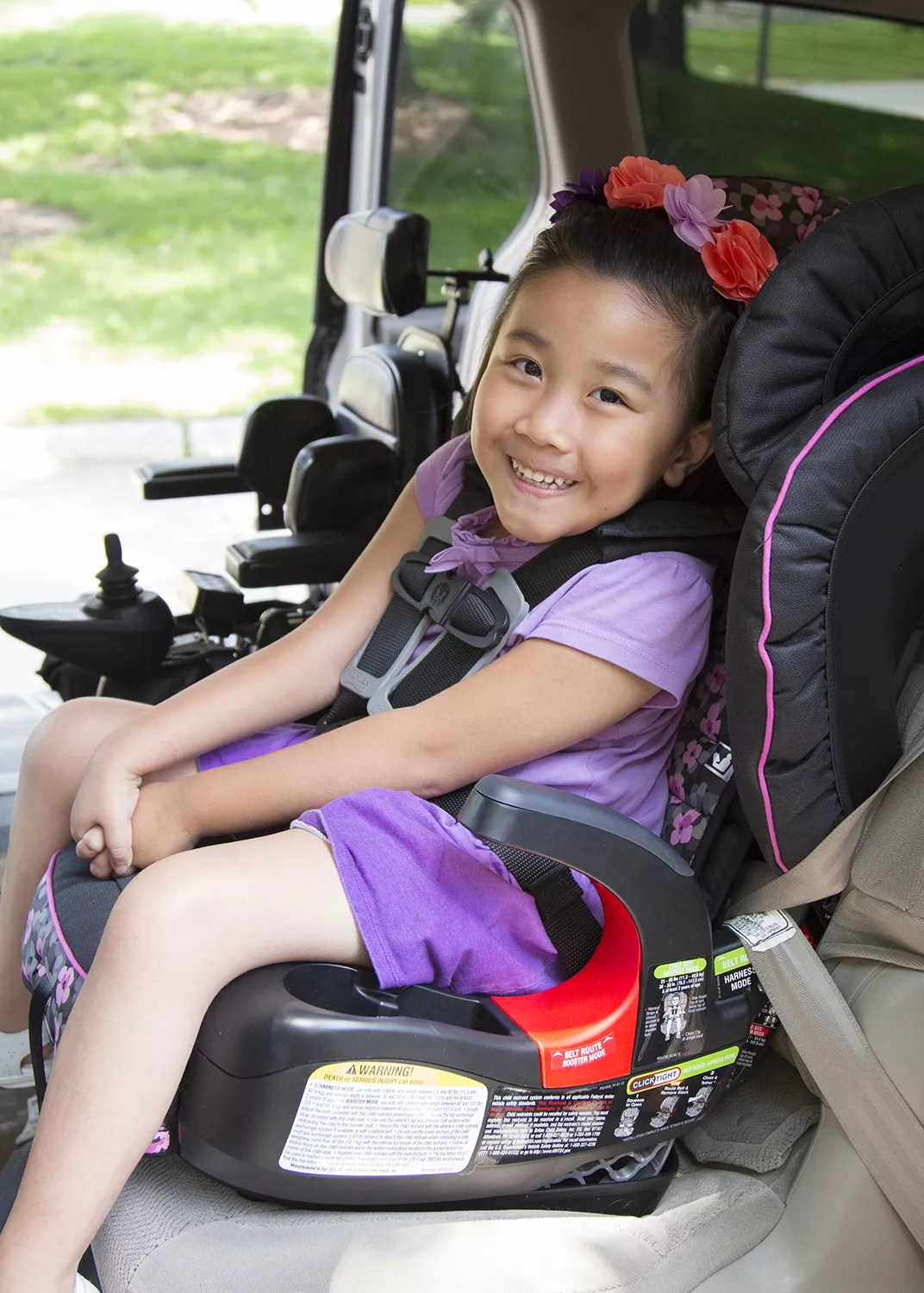Safe traveling: Kids and car seats

As a parent, when was the last time you checked your kids’ car seats?
It’s an important question, given that thousands of children are killed or injured each year in automobile crashes.
Making sure children are properly and safely restrained while riding in any vehicle is not only good practice—it’s the law.
The American Academy of Pediatrics recommendation is to keep children in a rear-facing car seat until they are two years old, or until the child reaches the maximum weight limit on the rear-facing weight car seat. Rear-facing car seats do a better job of supporting the head, neck, and spine of infants and toddlers in a crash. A 2007 study in the journal Injury Prevention found that children under age two were five times safer riding in a rear-facing car seat during a side crash than in a front-facing car seat.
Iowa law states:
- Children ages one to six must be secured in a child restraint system such as a safety seat or booster seat—NOT a seat belt
- Children ages six to eleven must be secured in a child restraint system or a safety belt
- Back-seat riders up to age 18 must be secured by a safety belt
“Some parents may not be aware that in Iowa, all children younger than age 18 must be safely secured while riding in a vehicle,” says Pam Hoogerwerf, director of community outreach and injury prevention at University of Iowa Stead Family Children’s Hospital.
“It may come as a surprise to some families that a 17-year-old, for example, must wear a safety belt while traveling in a car, even in the back seat,” Hoogerwerf says. “But the purpose of the law is to ensure that every child, no matter the age, is as safe as possible every time they ride in a vehicle.”
“It’s an added measure of safety that makes sense for these young children,” she says.
All children younger than age 13 should ride in the back seat of a vehicle. An air bag deploys at over 200 mph. Riding in the back seat keeps kids away from the air bag in case of deployment, which can cause neck injuries. If it’s absolutely necessary to put a child in the front passenger seat and the air bag cannot be deactivated, make sure the passenger seat is pushed back as far as possible.
When children transition to forward-facing car seats, an additional safety measure is to use a tether. This strap connects the top of the car seat to the vehicle to help prevent serious head and neck injuries in vehicle collisions.
As kids grow, one of the biggest challenges for parents is knowing when to transition from a booster seat to the vehicle’s seat belt. For these children, size matters more than age, so here’s a good guideline to follow:
- Position the child in the vehicle so they are sitting straight—with their rear ends and backs securely against the back of the seat
- If the child’s legs bend at a 90-degree angle, and the seat belt rests on the strongest part of their shoulder (not the child’s neck), the child is big enough to travel wearing the seat belt
For a seat belt to fit properly, the lap belt must lie snugly across the upper thighs—not the stomach. The shoulder belt should lie snugly across the shoulder and chest and not cross the neck or face.
Also, keep in mind that most car seats expire after six years from the date it was manufactured. You can find those dates are on the seat itself or base of the seat. If the date isn’t visible, check the owner’s manual or call the manufacturer.
To assist parents and families, the Safety Store at UI Stead Family Children’s Hospital offers low-cost car safety seats as well as car safety seat installation by appointment.
Learn more about child passenger seat safety.